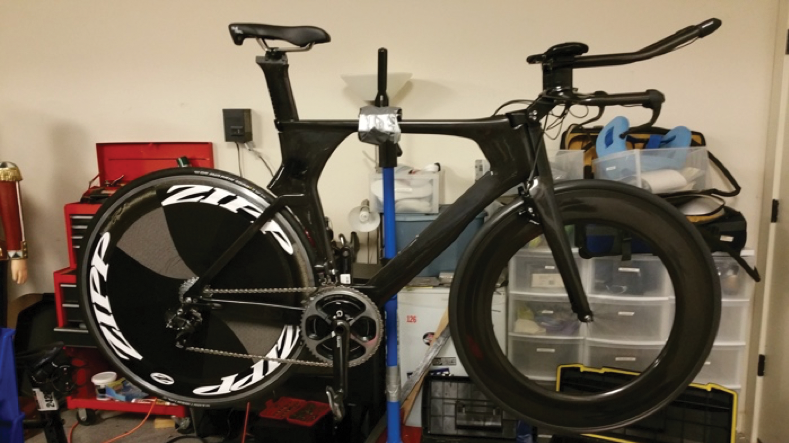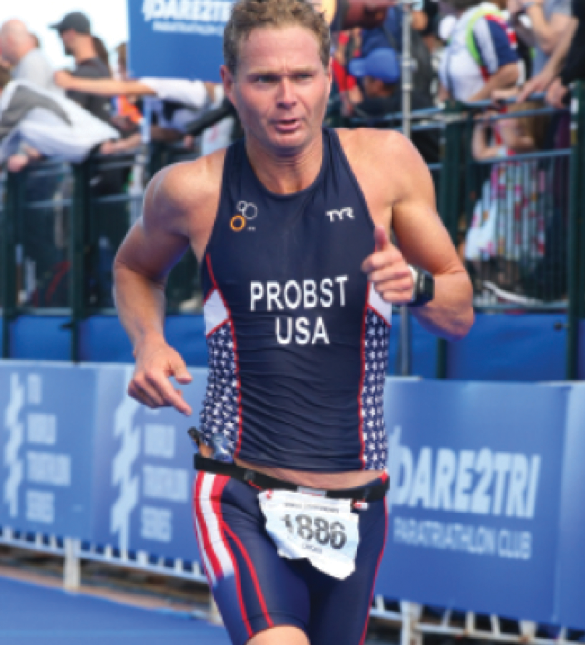
Ophthalmology can be a physically and mentally demanding profession. Taking time for yourself, such as time to exercise and improve your physical fitness, can be especially difficult. Despite these challenges, I have found that the ends more than justify the means when it comes to a healthier body and mind in the OR.
I was very athletic when I was younger, and I competed on both my high school and college swim teams. However, as I progressed through medical school, my primary focus naturally shifted, and athletic endeavors were temporarily placed on the back burner. I realized that, if I was really going to do well and excel in ophthalmology, I would have to devote 100% of my effort to it. This was great for my medical training but bad for my physical fitness.
FINDING A PASSION
I began running and biking about 20 years ago, after my first few years of practice, primarily to relieve stress. It never occurred to me to try a triathlon until my wife suggested that I combine the three athletic activities that I enjoyed: swimming, running, and biking.
Twenty years ago, when I participated in my first triathlon, I had no idea what I was doing. In that first race, I wore the wrong running shoes, wore the wrong type of wetsuit, and was not clipped into my bike pedals. I modestly finished in the middle of my age group. Despite the mistakes and mediocre results, I was hooked.
As an ophthalmologist, I’m a perfectionist, and I’m interested in details. I loved that there were so many small elements to this type of race that factored into how to be competitive. I started from square one, determined to master these details, hone my techniques, and constantly improve with each race.
PUSHING TO GET BETTER
To improve my triathlon performance, I focused on several areas. When I was a competitive swimmer in high school and college, it was always in a pool. I needed to change my technique in order to swim not only for longer distances but in open water, which is a totally different skill set. It took years of training for me to become the best open-water swimmer I could be. I also hired a running coach; started eating a vegetarian diet; and upgraded my shoes, clothes, and bicycle.
Biking in a triathlon is highly technical, and your performance is, to some degree, based on the equipment you use. It is not unusual to see competitors riding $10,000 bicycles in a race. In my 20 years of racing, I went through many different bikes before I decided to build my own from the frame up. When I did commit to that project, I built my dream bike, made from all carbon fiber and including electronic shifting and disc wheels (Figure 1).

Figure 1. Louis Probst, MD, competed in a triathlon on this bicycle he built himself.
After about 3 years of performing well in small, local triathlons, I decided to step up and enter the Chicago Triathlon, which annually involves about 10,000 competitors and is one of the biggest triathlons in the world. After 3 years of running in that race, I was invited into the elite category, which includes the top finishers from the previous year. I competed in this extremely competitive category for about 5 years at the Olympic triathlon distance.
THE BIG STAGE
In 2014, the Age Group National Championships event in the USA Triathlon National Championships was in Milwaukee, Wisconsin, only an hour’s drive from Chicago, where one of my laser centers is located. I qualified for this race by placing in the top 10% in my previous triathlons that year. The day before the race, I finished up a day of surgery, drove to Milwaukee, and checked in my bike at race registration with only 5 minutes to spare before the bike transition area closed.
I was so exhausted from the stress of the day that I had the best sleep of my life that night. Because I slept so well, I had a fantastic race. I ended up placing in the top 25 in my age group, which qualified me to compete for Team USA in the International Triathlon Union World Triathlon Series, which was conveniently scheduled in Chicago the following year.
So it was that, in 2015, in the week of my 50th birthday, I competed for Team USA in Chicago. It was a surreal experience. September in Chicago can bring unpredictable weather, but the race conditions were perfect. It was a wild race with the cycling portion done at high speeds through the city streets and tunnels of downtown Chicago. My wife and friends were able to come and support me, and it felt like the culmination of my entire life of training (Figure 2). I ended up placing in my age group, 28th overall, 14th for Team USA, and the second Canadian. After this race was over, I felt as though I didn’t have anything left to prove with triathlons, as I had truly taken my performance to my highest level.

Figure 2. Dr. Probst represented Team USA at the 2015 World Triathlon Series.
THE NEXT STEP
After racing for Team USA, I began to think about new personal challenges. I started to branch out into more adventure races and charity events, and I plan to do more of that in the future.
This past year, as one of nine swimmers, I participated in a charity event in which we towed a 50-foot boat about 5 miles across the Straits of Mackinac to Mackinac Island in northern Michigan (Figure 3). Three swimmers at a time were attached to the boat with cables. To reach the island it took a total of 7 hours, of which I personally swam 3 hours. The event raised $100,000 for after-school programs to help disadvantaged children in Flint, Michigan.

Figure 3. As part of a charity event, nine swimmers, including Dr. Probst, towed a 50-foot boat across the Straits of Mackinac in northern Michigan.
THE HOME STRETCH
Ophthalmology is an intense specialty. So much of our surgical outcomes relies on perfecting small details. As ophthalmic surgeons, we set high standards for ourselves, and this can lead to a high level of stress. Having an activity outside of work on which to refocus our attention can provide a physical and mental release. I believe that challenging oneself physically and mentally helps create a counterbalance to the obligation of being a perfect surgeon every day.
It is interesting to me that there are many ophthalmologists who are interested in endurance sports. A triathlon is such a complex undertaking that it appeals to the kind of personality that is common among ophthalmologists—a perfectionist personality that desires to master many different skills.




